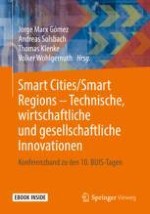2019 | OriginalPaper | Chapter
8. Sustainable Sensor Based Environmental Information Systems for Smart Cities
Authors : Ruthbetha Kateule, Andreas Winter
Published in: Smart Cities/Smart Regions – Technische, wirtschaftliche und gesellschaftliche Innovationen
Publisher: Springer Fachmedien Wiesbaden
Activate our intelligent search to find suitable subject content or patents.
Select sections of text to find matching patents with Artificial Intelligence. powered by
Select sections of text to find additional relevant content using AI-assisted search. powered by
